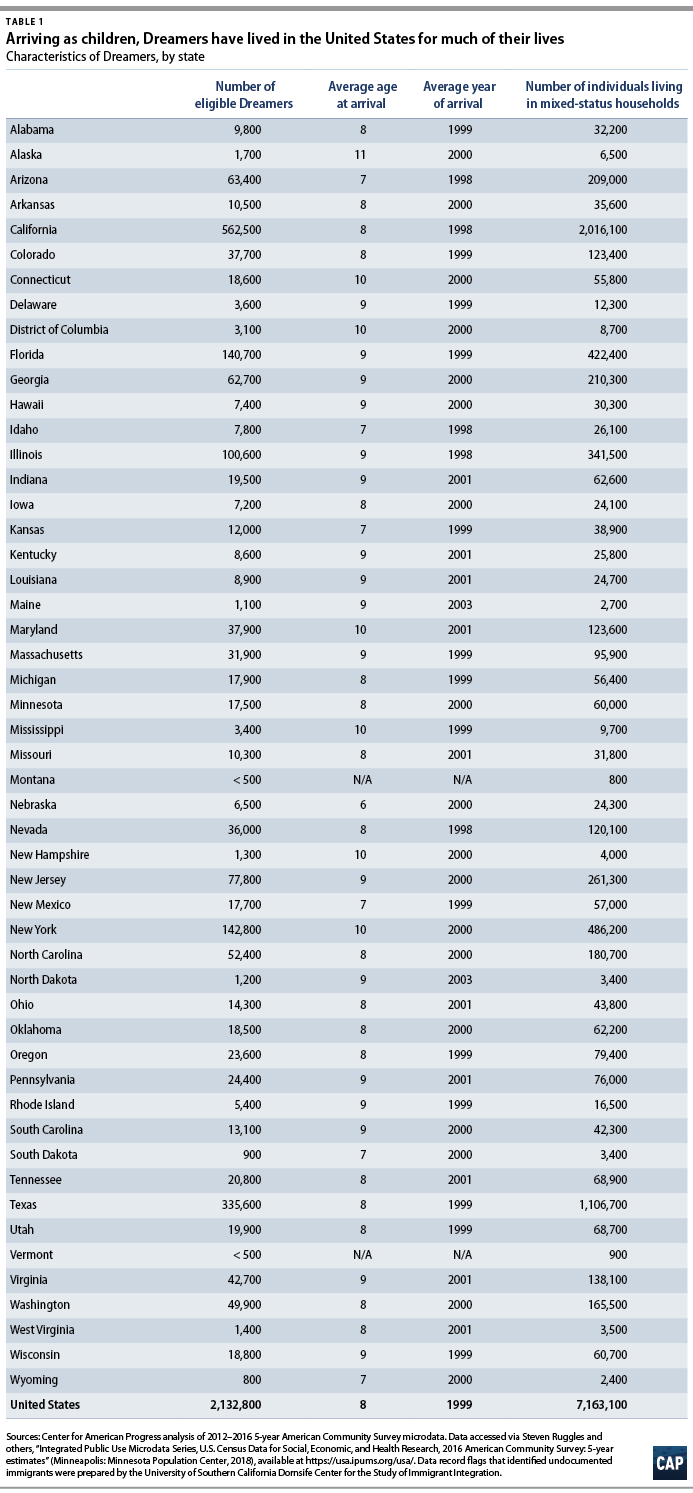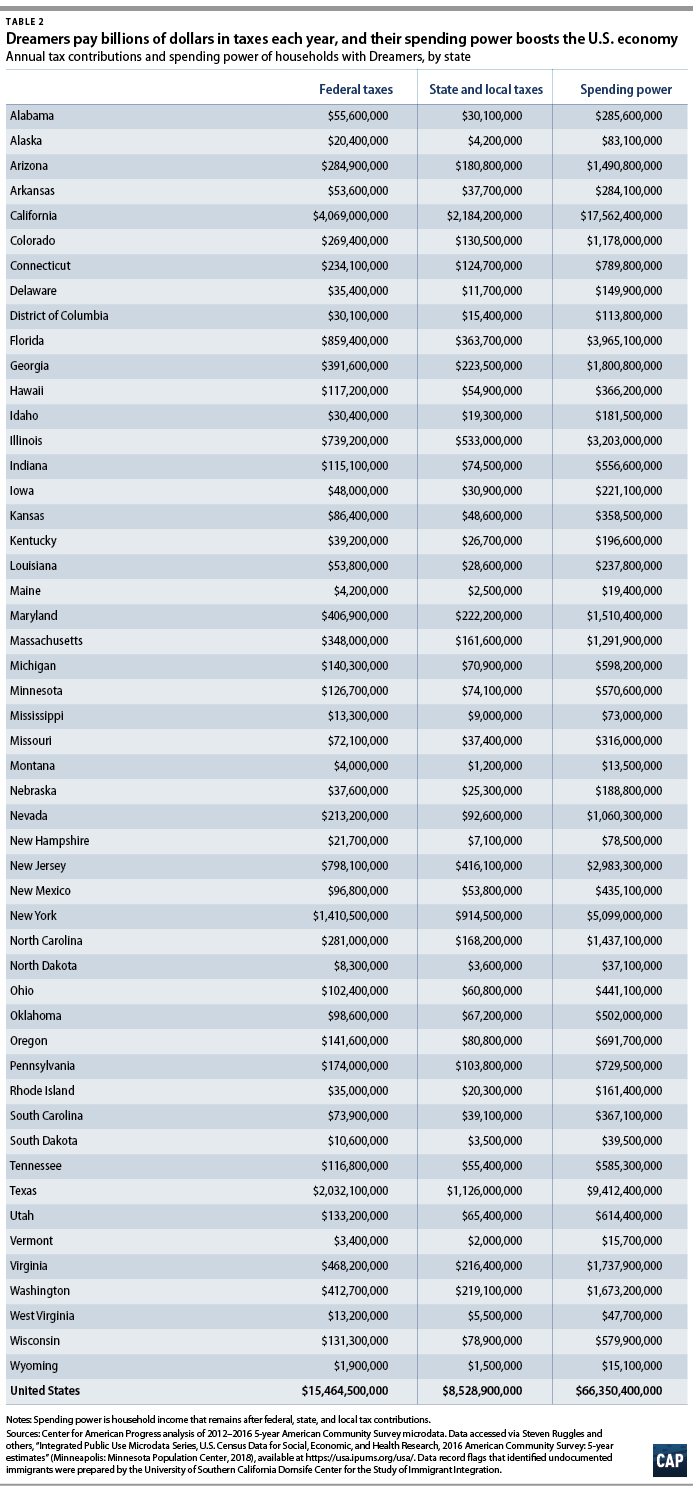During its first two years in office, the Trump administration has worked to dismantle major aspects of the U.S. immigration system. Of particular note are its attempts to terminate the legal protections relied upon by multiple groups of immigrants who have lived in the United States for decades. These groups include recipients of Deferred Action for Childhood Arrivals (DACA); those who hold Temporary Protected Status (TPS); and beneficiaries of Deferred Enforced Departure (DED).
Poll after poll shows that Americans are united in support of legislation that would offer a pathway to citizenship for Dreamers—undocumented immigrants who came to the United States years ago as children. Yet despite multiple congressional attempts to pass the Dream Act since its first introduction in 2001, such a bill has never been signed into law.
Introduced this month, the American Dream and Promise Act of 2019 offers a pathway to citizenship for Dreamers as well as immigrants eligible for TPS and DED. An estimated 2.5 million immigrants could be permanently protected under the bill.
Title I of the Dream and Promise Act includes provisions that would extend Conditional Permanent Resident (CPR) status to Dreamers who meet the following criteria:
- They have lived in the United States for at least four years prior to the bill’s enactment date.
- They were under age 18 upon their arrival in the United States.
- They are enrolled in or have completed high school, an equivalent program, or an industry-recognized credential program.
- They pass a background check.
Up to 2.1 million Dreamers are eligible to apply for CPR status under the bill. This number includes the 1.8 million Dreamers who are eligible now, as well as the 300,000 Dreamers who will become eligible as they enroll in or complete the education requirement.
For Dreamers, the United States is home
Dreamers are often described as American in every way save for a piece of paper, having lived in the country since childhood and for such significant lengths of time. CAP analysis finds that the average Dreamer came to the United States when they were 8 years old and has lived in the country since 1999. (see Table 1)
More than 5 million individuals live in a household that includes a Dreamer. Indeed, as years pass and Dreamers grow up, they are beginning families of their own: 795,000 U.S.-born children have Dreamer parents who are eligible for protection under the Dream and Promise Act. Dreamers and their families live in communities across the United States; California, Texas, New York, Florida, and Illinois are home to the largest numbers of eligible Dreamers, at more than 100,000 each, while an additional 26 states are home to from 10,000 to 100,000 Dreamers.

Dreamers are crucial to the U.S. workforce and economy
Beyond these long-standing ties to their communities, Dreamers are crucial participants in the U.S. workforce and economy. To be eligible for protection under the Dream and Promise Act, these immigrants must be enrolled in or have completed high school, an equivalent program, or an industry-recognized credential program. Nearly 4 in 5 Dreamers ages 16 and older—79 percent—are enrolled in school or employed. What’s more, to earn Lawful Permanent Resident (LPR) status, Dreamers have to meet additional educational and employment benchmarks.
Dreamers are employed in nearly every occupation, with an estimated 159,000 working in food preparation and serving, an estimated 147,000 working in sales, an estimated 125,000 working in construction, and an estimated 124,000 working in office and administrative support.
Households that include Dreamers make massive contributions to the U.S. economy. Currently, however, these contributions are under as much threat as Dreamers’ futures. Annually, households that include Dreamers generate $15.5 billion in federal taxes and $8.5 billion in state and local taxes, and they hold $66.4 billion in spending power. Collectively, Dreamers own 144,000 homes and pay $1.5 billion each year in mortgage payments.

Conclusion
With the Dream and Promise Act of 2019, Congress once again has the opportunity to permanently protect millions of Dreamers, many of whom have lived in this country for decades. The act would also protect 460,000 TPS holders and DED recipients. Now is the time to pass the bill into law.
Nicole Prchal Svajlenka is a senior policy analyst of Immigration Policy at the Center for American Progress. She thanks the University of Southern California Dornsife Center for the Study of Immigrant Integration for providing access to its data.
Methodology
Unless otherwise cited, the findings presented in this column are based on CAP analysis of 2012–2016 5-year American Community Survey microdata, with tags developed by the University of Southern California Dornsife Center for the Study of Immigrant Integration in order to identify eligibility for the Dream and Promise Act of 2019. Corresponding detailed congressional district-level data, as well as a methodological discussion, can be found here.
Household tax contributions and spending power estimates are based on methodology developed by New American Economy and include all households that contain a member who would be eligible for protection under the Dream and Promise Act of 2019, including immigrant youth who will be eligible to apply for CPR status once they enroll in secondary school. Federal tax rates come from the Congressional Budget Office, and state and local tax rates come from the Institute on Taxation and Economic Policy. Spending power is measured as household income after federal, state, and local tax contributions.